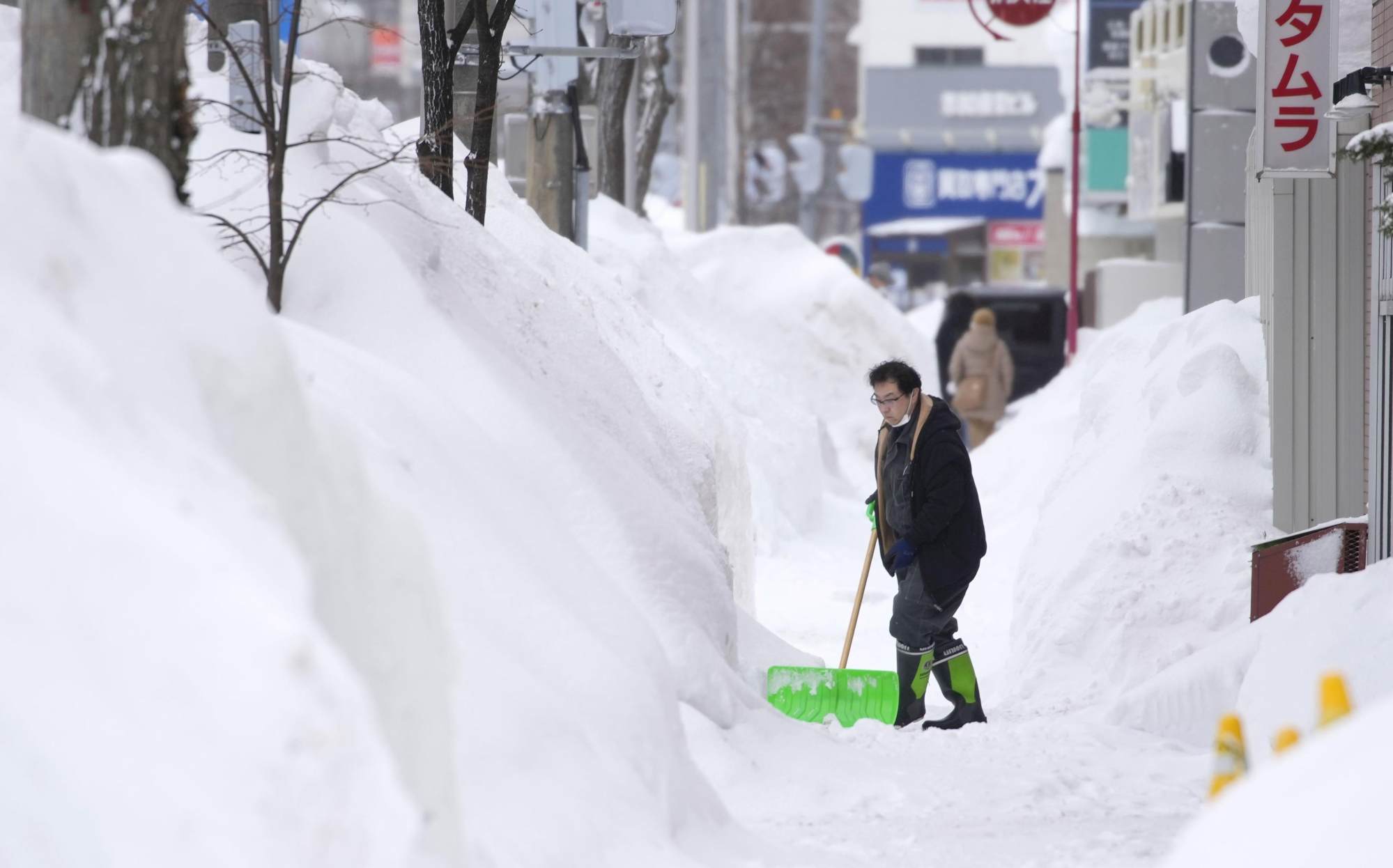Japan steps up battle against pollen season to help hay fever sufferers breathe easier
A map on the website of The Japan Weather Association indicates that measurable levels of pollen have been detected by sensors across the Kanto region surrounding Tokyo and in Yamaguchi prefecture, on the far southwest tip of Honshu.
Yoko Tsukamoto is among the approximately 40 per cent of Japanese who suffer from cedar allergies every year, and admits that she groans whenever she hears the first warnings of pollen each spring.
“In many ways I’m fortunate, as I live in Hokkaido, and we do not have so many trees producing pollen every year, but I dread having to travel to Tokyo or somewhere else in Japan at this time of the year,” said Tsukamoto, a professor of infection control at the Health Sciences University of Hokkaido.
“I get kafunsho really badly,” she told This Week in Asia. “I get terribly itchy eyes and a runny nose. It really is unbearable. I try to always wear a mask and glasses when I go out, but that is often not enough. I also take medicine, but it does not always work very well, and I still end up with itchy and sore eyes.”

Like the weather services, Tsukamoto says it is likely that the early start of the cedar pollen season is the result of a warm winter, pointing out that while temperatures should still be below 0 degrees Celsius (32 degrees Fahrenheit) in Sapporo at the moment, daytime temperatures have consistently been in the positive for the last week.
Japan’s cedar pollen crisis is largely self-inflicted, the result of misguided policies implemented long ago.
In the decades before World War II, Japan’s forests were home to a wide range of trees, both deciduous and evergreen, and pollen was not a major problem. In the aftermath of the conflict, however, towns and cities that had been destroyed in the Allies’ bombing campaign had to be rebuilt.
Town planners soon used up much of the nation’s timber supplies and chose to plant fast-growing cedar varieties to keep up with demand. As well as maturing quickly, the trees are ideal for the construction sector, as they grow straight and are weather-and insect-resistant.

Today, as much as 70 per cent of Japan is forested, with an estimated 900,000 acres of land presently covered by cultivated “sugi” trees.
Unfortunately, the trees’ capacity to release clouds of pollen every spring was overlooked.
According to the Japanese Society of Otolaryngology, about 40 per cent of Japanese people experience the primary symptoms of hay fever, which include eye irritation, sneezing and a streaming nose. In some cases, exposure can trigger shortness of breath and earache.
The problem also goes beyond the well-being of individuals, with some estimates suggesting that household spending contracts by more than 393 billion yen (US$2.65 billion) during the peak season for allergies, between mid-February and the end of April, as people choose to stay home instead of exposing themselves to pollen.
The government is, however, attempting to remedy the problem, announcing in December a campaign to cut down millions of cedar trees.

In a policy paper, the government says it is designating areas close to major cities that have high concentrations of sugi trees for large-scale felling operations. The plan calls for nearly 180,000 acres of trees to be cut down every year for the next decade.
There will also be funding for the development of new medicines to ease the symptoms of pollen exposure that affect around 50 million Japanese.
“These trees release a very light and dry pollen that carries on the wind very easily,” said Kevin Short, a naturalist and former professor of cultural anthropology at Tokyo University of Information Sciences.”
The trees rely on the wind to pollinate, but they release vast amounts of pollen because the wind can be unpredictable.”
Nevertheless, the pollen can travel hundreds of miles on the wind and blow into cities from the slopes of surrounding mountains.
There is broad support for the government’s plans to fell the sugi trees, with environmentalists hopeful that an aggressive reforestation campaign will help to return the nation’s woodlands to their natural state.


 Offers free spin
Offers free spin